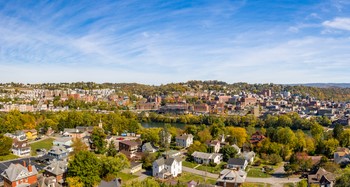
A new transportation center at West Virginia University will pour $1.5 million in federal dollars toward rural transportation challenges, officials said Tuesday.
The Sustainable Mobility and Accessibility Regional Transportation Equity Research, or SMARTER, Center at WVU’s Benjamin M. Statler College of Engineering and Mineral Resources will open this summer and position the state to take advantage of cutting-edge transportation technologies, lead researcher and assistant professor Kakan Dey said.
“In West Virginia, our primary mobility challenges come from rural settings and affect low-income communities,” Dey said. “Low-income households that don’t own automobiles are compromised in both their quality of life and economic opportunity, but solutions like transit services are not economically viable without sufficient ridership.”
Knowing that public transit does not make financial sense in rural areas and increases the challenges to rural residents when accessing healthy food, jobs, and doctors’ offices, Dey said things like self-driving electric cars and ride-sharing services are ways to improve residents’ lives substantially.
He said that funding provided by the U.S. Department of Transportation will help ensure the most remote and economically distressed communities in the state have access to mobility solutions.
Dey said apps that help with carpooling in a lightweight, self-driving car are more sustainable than the current transportation infrastructure that focuses on personal gas-fueled automobiles and fixed route buses on fixed schedules.
In a state where out-of-state tourists’ electric cars have been known to run out of battery power between charging stations, Dey said he understands his research may seem counterintuitive, but he is ready to meet the obstacles head-on.
“SMARTER will develop mobility solutions that address infrastructure barriers, like the suitability of rural roads for self-driving cars, as well as technology barriers like the lack of broadband and cellular connectivity, lack of access to smartphones, and demographic characteristics such as a higher percentage of people with disabilities,” he said. “We want to ensure that emerging mobility solutions are accessible to all people.”